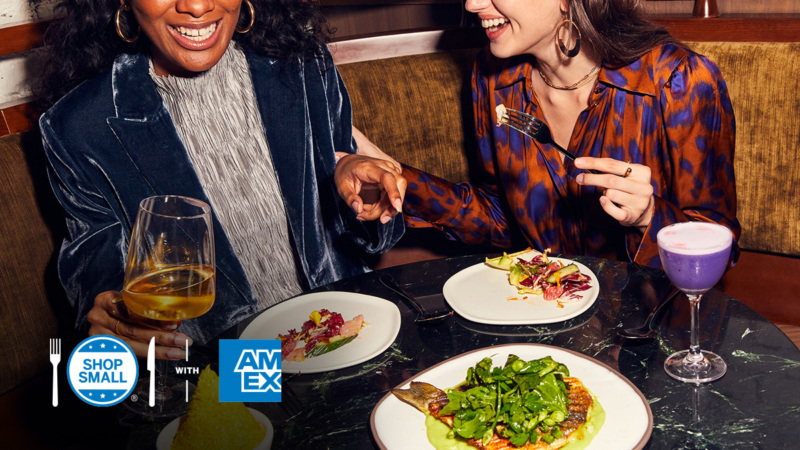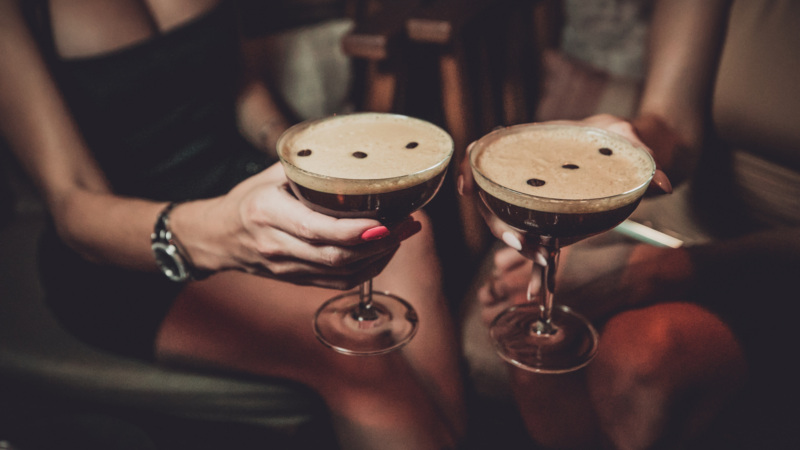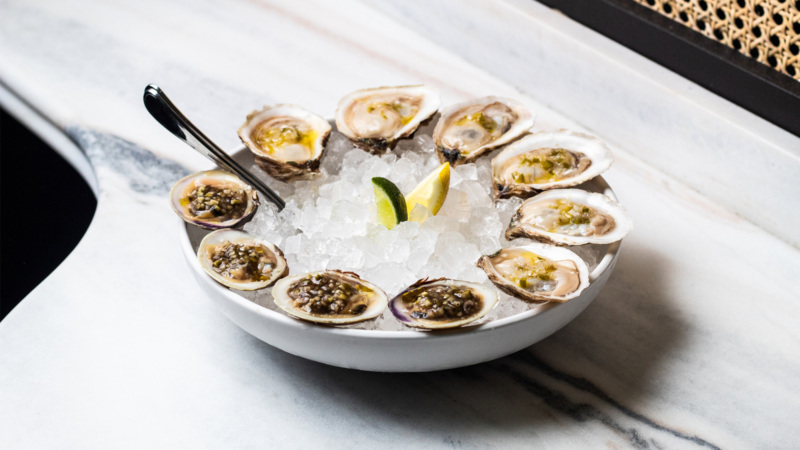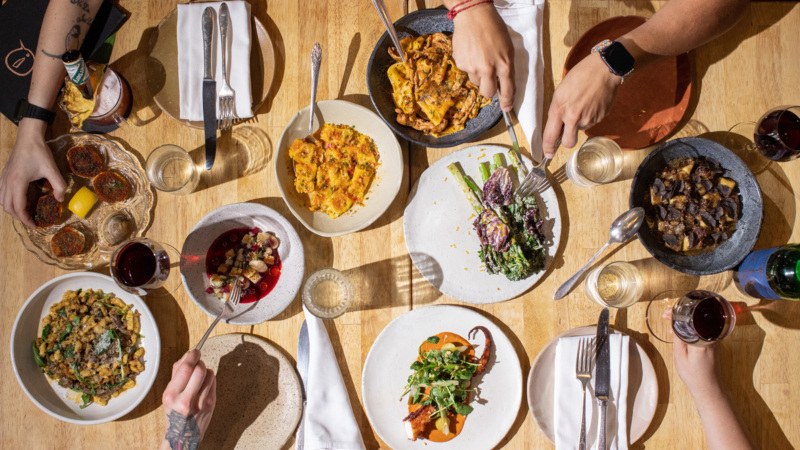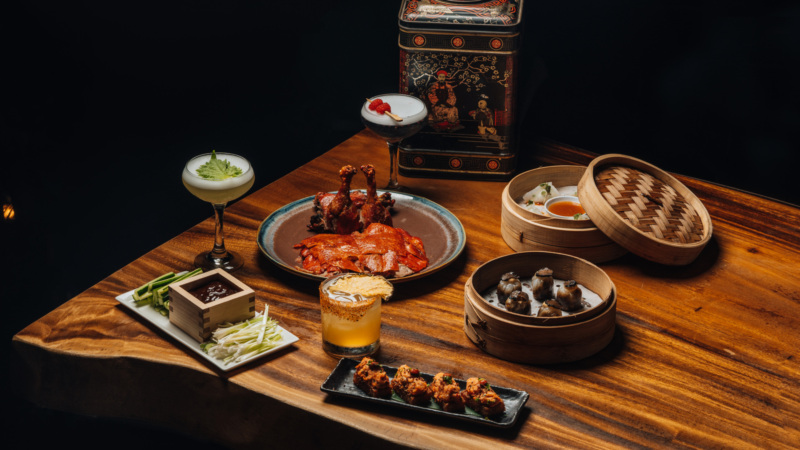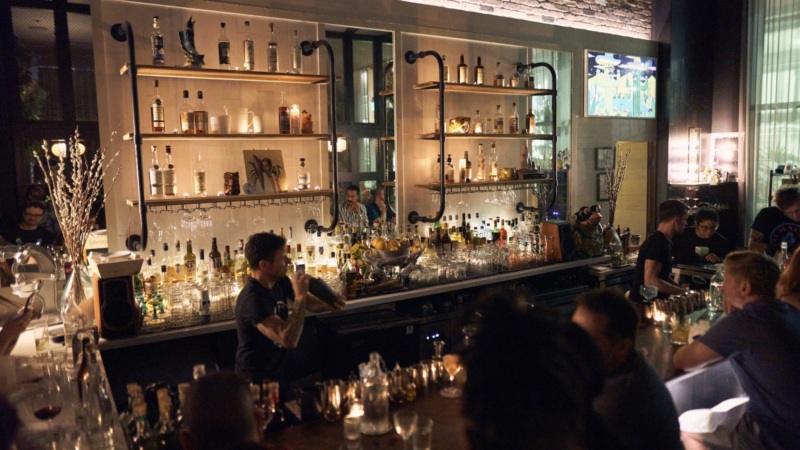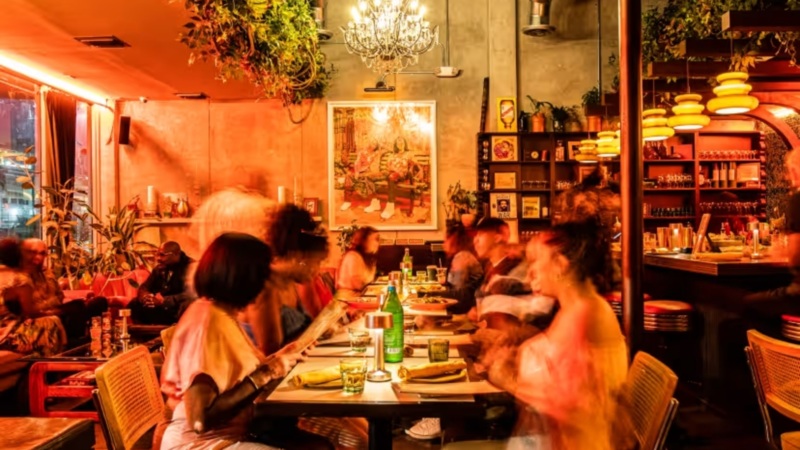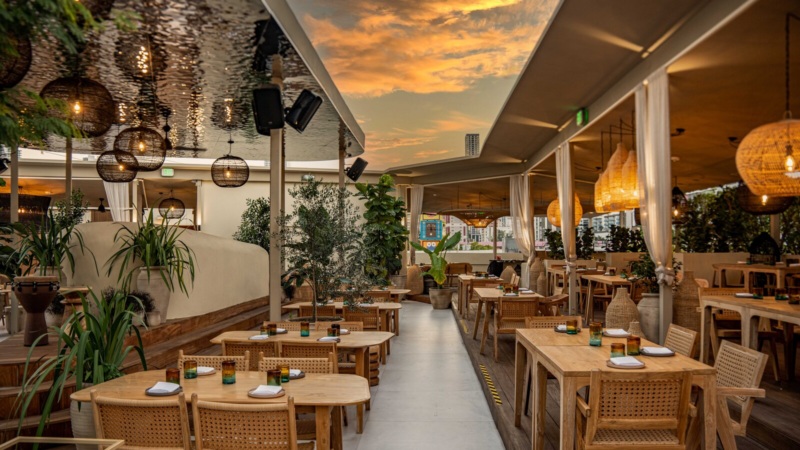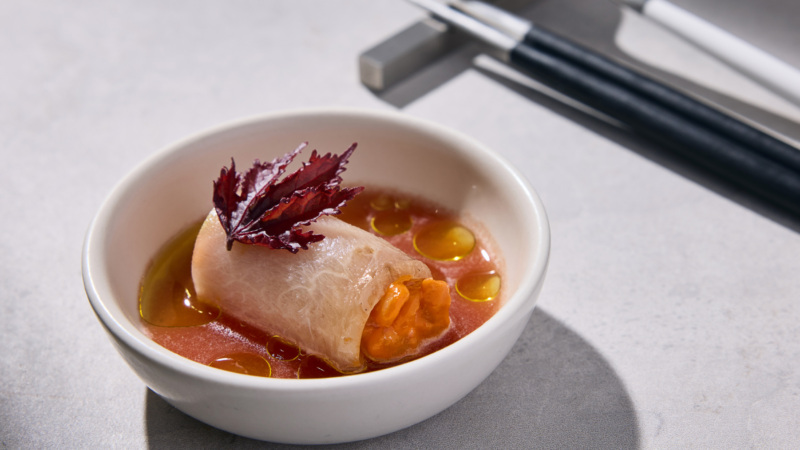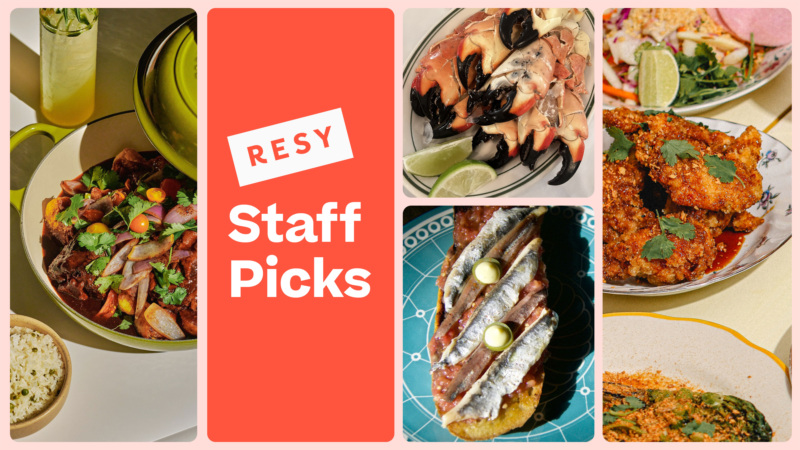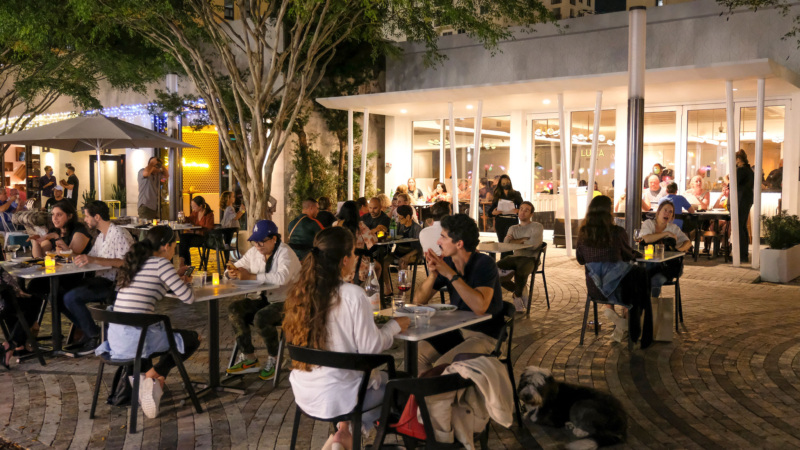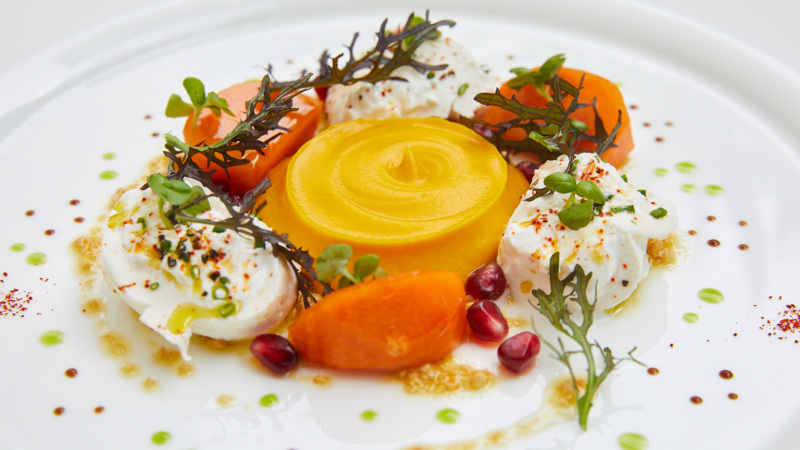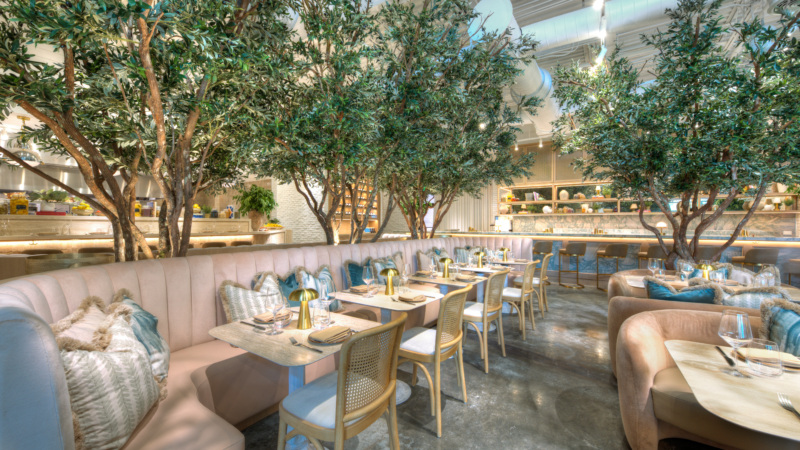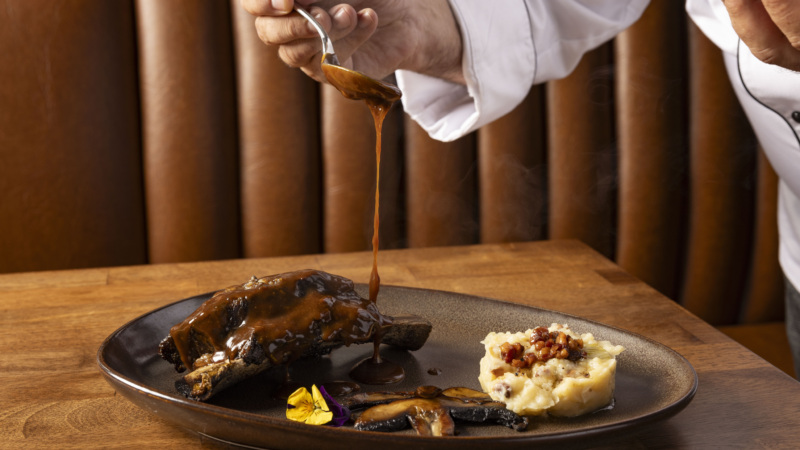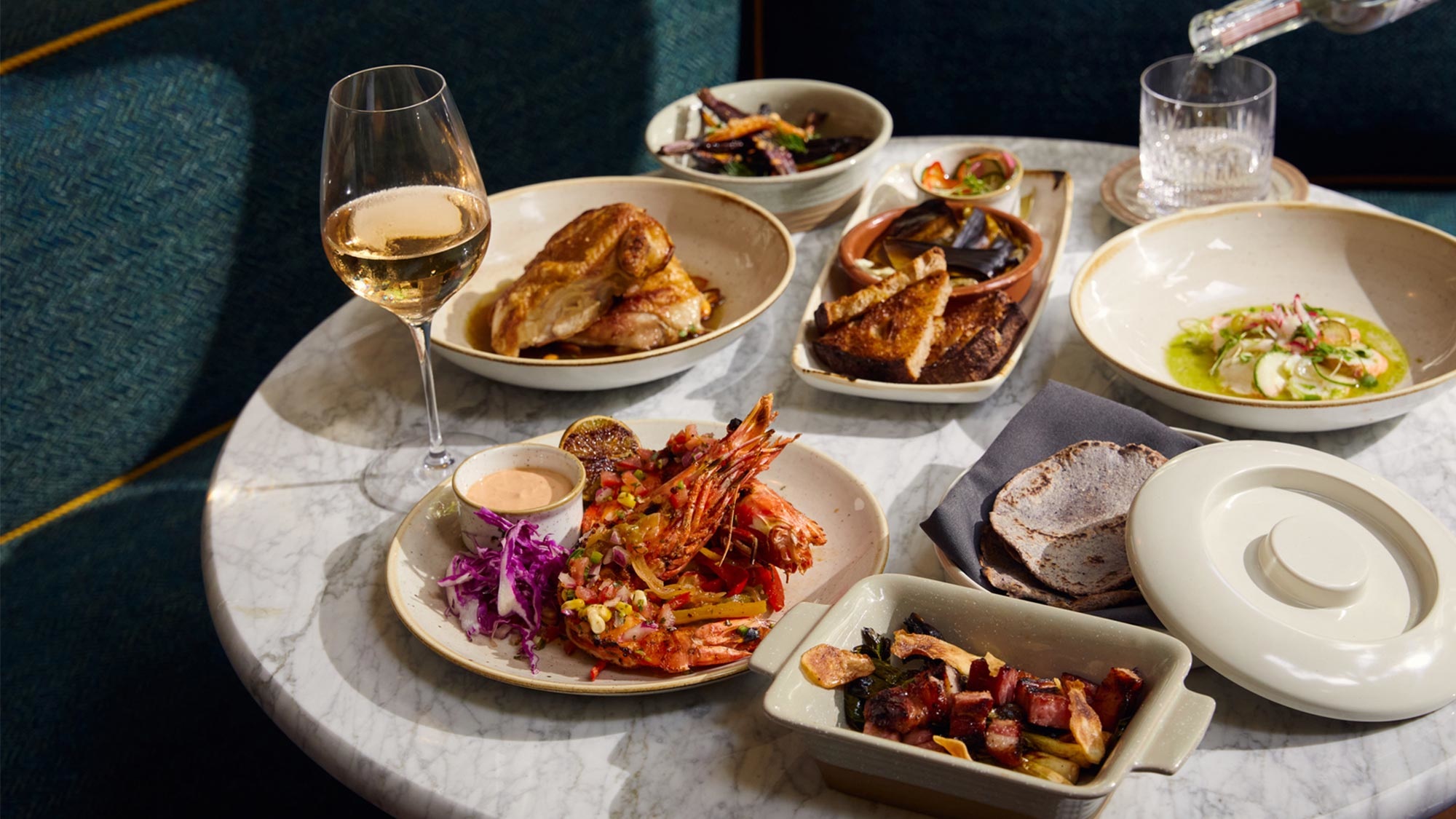
How This Hospitality Team Builds Some of Miami’s Most Exciting Restaurants and Bars
Storytelling is at the heart of Lost Boy & Co., the hospitality team behind some of Miami’s biggest restaurant and bar openings over the past year.
Whether they’re creating something new or reviving an institution, partners Chris Hudnall and Randy Alonso have grown Lost Boy from a single bar into a hospitality group that does everything in-house – from concept and menu development to interior design and day-to-day operations.
Since opening their old-school Lost Boy Dry Goods bar in downtown Miami back in 2018, Lost Boy & Co.’s recent resume is impressive:
- They restored local dive Fox’s Lounge in South Miami to its original glory by rebuilding “the darkest bar in Miami” from scratch in the same space it called home from 1946 until it closed in 2015, after which the interior was torn down.
- They designed food and beverage programs like El Salón for the boutique Esmé Hotel on historic Española Way – originally a 1920s artist colony modeled after Mediterranean villages.
- They own the neighboring Spanish tapas restaurant and gin bar, Tropezón.
- They partnered with the iconic Mayfair House Hotel & Garden, a staple in Coconut Grove since the 1980s, to open a new restaurant and bar as part of the historic property’s reimagining, including the Mayfair Grill (which serves open-fire cuisine of the American Southwest, inspired by one of the partner’s upbringing in Arizona), and Calyspo-style rooftop rum bar SipSip.
- And they debuted Joliet, a New Orleans-inspired seafood bistro in South Beach …with a nearby neighborhood bar coming soon called Brother’s Keeper.
All in a span of about 14 months.
We sat down with Hudnall to discuss how Lost Boy & Co. blends hospitality with history — and much more.
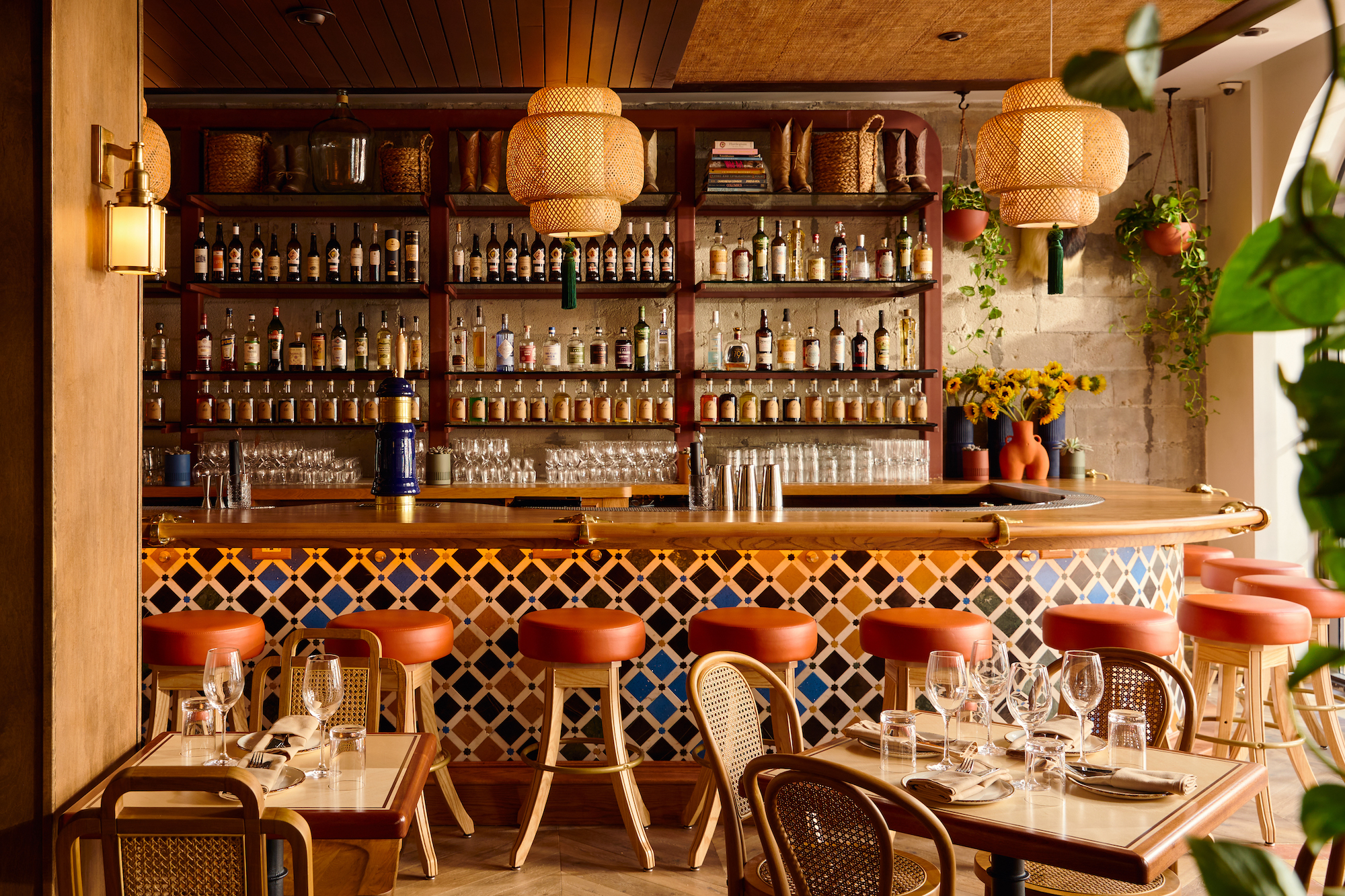
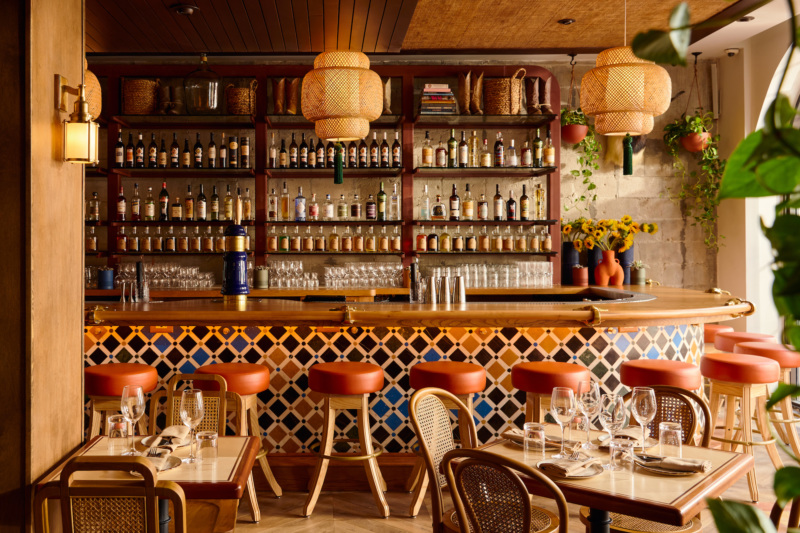
Resy: After starting out on the beverage side with Lost Boy, what has it been like opening full-service restaurants? What’s the difference between opening a restaurant and a bar, or is it actually more similar than not?
Chris Hudnall: It’s a bigger headache (laughing). My background for 10 years prior to Lost Boy was mainly in beverage with SoHo House, and that’s what I had gravitated toward as I grew my career. … When we opened Lost Boy, we had gone back and forth about putting a proper kitchen in there, but because it’s in the DuPont building, which is also a very old building, the logistics of putting a proper hood in there was just so expensive at the time. We decided this is really supposed to be a neighborhood bar for locals – let’s not mess around with food, and a kitchen, and a chef, and culinary employees. Let’s just focus on really good drinks and bar snacks and see where it goes.
We always wanted to get into full-service restaurants, and the transition has been different. There’s obviously a lot more to it, but we’ve been lucky enough to surround ourselves with pretty great chefs. We’ve given them our vision and they’ve executed it times 1,000. So it’s definitely more challenging, but with the right people, less of a challenge than it should be.
Many Lost Boy concepts feel tied to a sense of history and seem to draw inspiration from a unique setting. When it comes to creating a new concept in a historic place, how do you decide what story to tell?
At Tropezón, for example, a lot of the influence was the surrounding Spanish architecture. When we walked into this space, it was basically nothing but a cement block, but there were these beautiful archways that were original to the building. That whole Española Way district was built in the 1920s as an artist colony. At the Casa Matanza building, Al Capone actually had an underground gambling ring. There’s a lot of history there.
My partner kept looking at these archways and said we should play these up. He’s Cuban but with Spanish descent – a lot of his family is from Spain and he’d been going back and forth to Spain for years – so he wanted to open a Spanish-style restaurant. And on the beverage side, at the time I really loved gin. So we decided, “Why don’t we just go out to Spain for 10 days and get some inspiration and bring it back to see what we come up with?” And that’s what we did. We drove all around Andalucía, we ate, we drank, we took pictures of design and architecture that we loved, and brought it home to open Tropezón.
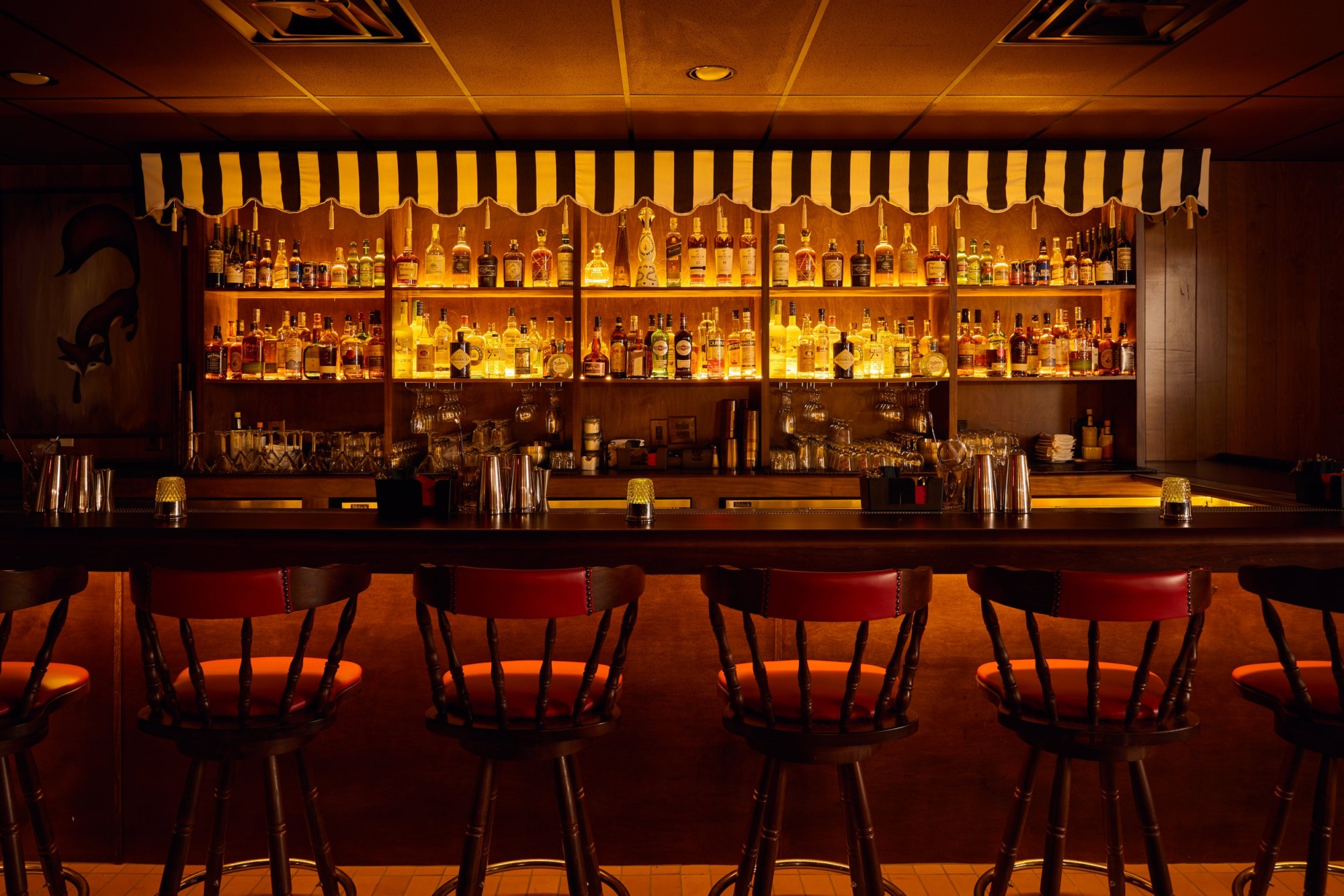
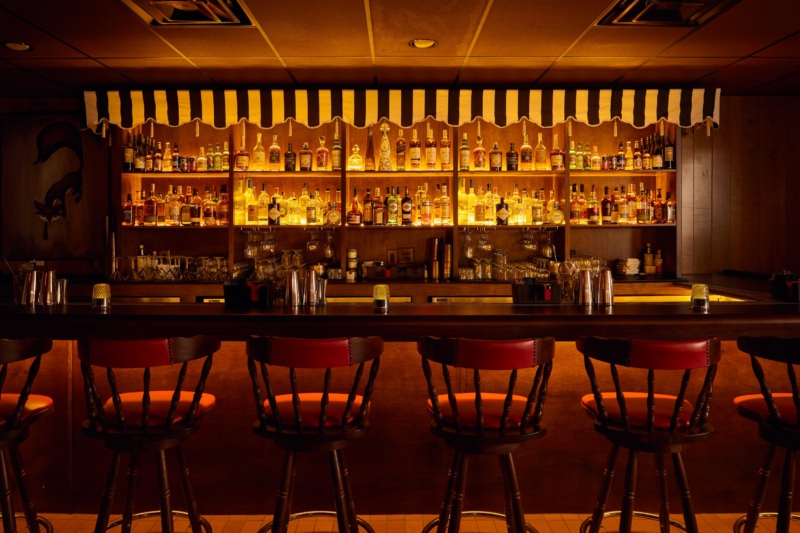
What’s it like then working with your chefs to craft a menu that tells the story of your venue?
The first step is really finding the right chef. What really drives them is passion and the style of food that they’re passionate about. We usually conceptualize a menu with our culinary director and then hand that over, and the chef starts hitting the road with it. We give our chefs the vision and direction and allow them to develop the menu. We go through multiple tastings and we give them feedback. It’s really a collaborative effort, from the feedback they’re receiving to the goal we’re trying to get to, but the chefs have to really lead the process, own the process, and then execute it.
Fox’s Lounge was completely different. We were dealing with recipes that are 50 years old. The old chef had passed away, but his wife is still alive and we got in contact with her. We sat down and picked her brain, we got her involved with tastings, and she also had some old handwritten recipes from her late husband. The biggest motivator was making sure that people that did go to Fox ‘s 20 years ago came and the food would bring some sort of comfort, to recreate what they’d had in the past.
If you look at the menu design and layout, it’s pretty much the original. We’ve since had to change the offering a little because people just don’t eat that way anymore, but we kept the thumb bits, the onion rings, and the Prime Rib Nights and core items.
Speaking of which, what was it like restoring the Fox’s Lounge space to its original glory? What has the reaction been from guests to see the institution brought back to life?
My partner grew up in South Miami, so he used to go there with his parents when he was younger. When the property owners reached out to us about the space, my partner Googled the address and was like, “I think this is the old Fox’s.” So when we got there, we went in and they had actually demolished all the interior – everything except for the hood. It was down to the brick. So we left there a little bummed, but he was like, “Well, we could probably rebuild it.” And I told him, “If we go down that rabbit hole, this will literally probably be the hardest thing we’ve ever done.” He reached out to a lot of people that he grew up with in South Miami, got old pictures that we had to put together, printed everything off of Google, and went to work to start designing out how we’d put this together.
Everything at Fox’s Lounge was rebuilt to its original – all the wood paneling walls, all the red banquettes, the custom bar in its original shape, the shelving, and the lighting. It was really nerve-wracking when guests were arriving, since we didn’t know how people were going to react, and some people were crying. There are so many stories there – people have met their husbands and wives there, big political meetings that happened there. Just a lot of memories there that people walked into.
Everybody kept saying the walk-up liquor window had to be there, but we couldn’t get it approved by the city. Instead we were going to have a wine and liquor store called Sherron Inn Liquors, but when we had just finished the buildout of that liquor store – it was ready to open and we were stocking the shelves – we saw there was such a demand for seating at Fox’s Lounge, that we actually demolished the liquor store and then expanded the dining room. We can now book larger groups and people are having their birthday parties there, and it just makes sense. But the liquor store was really beautiful.
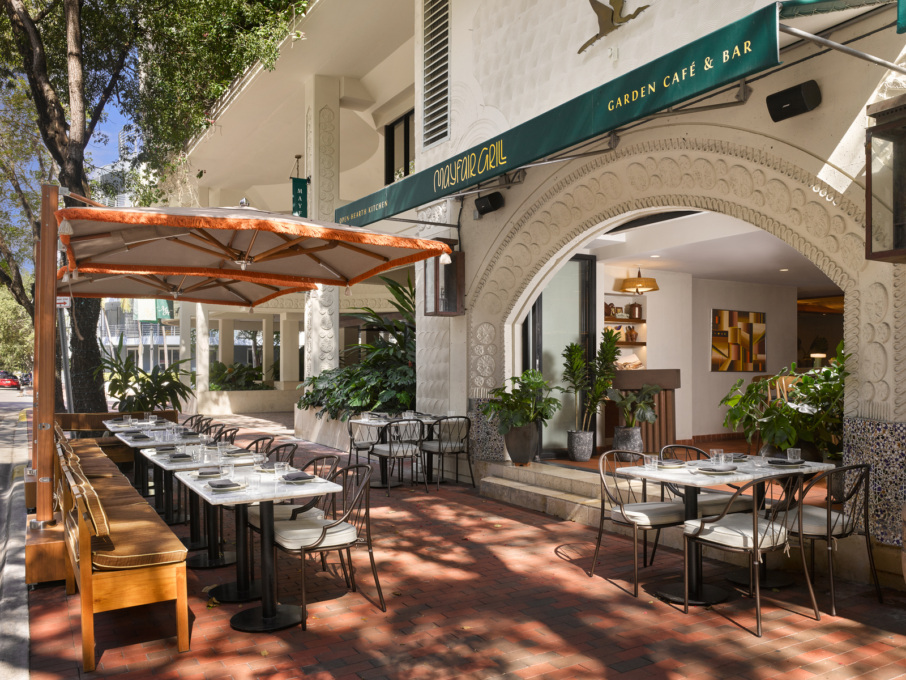
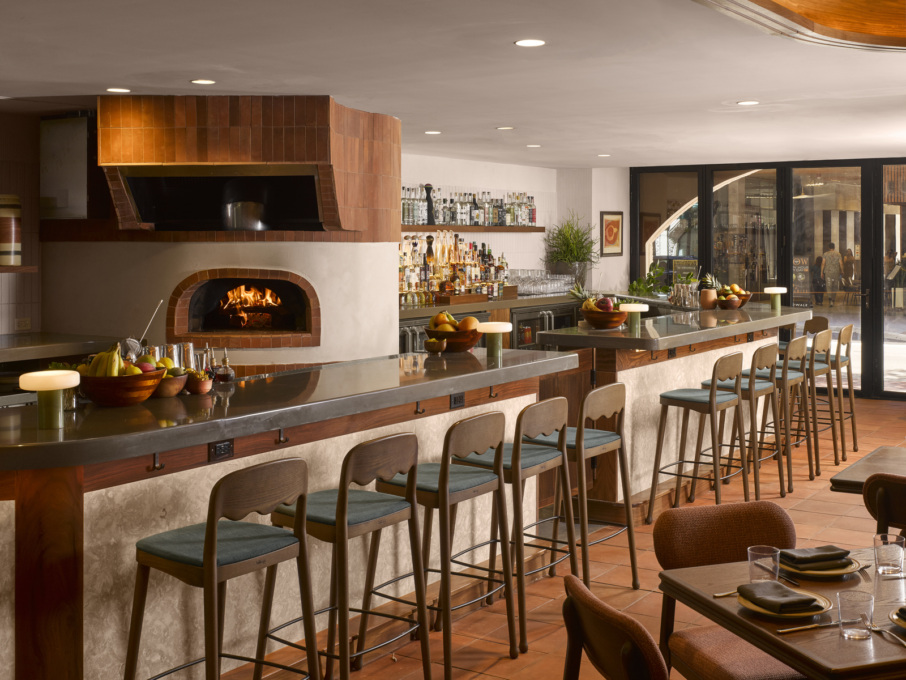
How do you make sure your concepts feel part of the community and like they’re meant for locals?
Mayfair has been the best exercise in trying to connect with the community. Mayfair has a lot of memories, right? When people found out we were going to be partners with the Mayfair, they immediately started talking about: “Oh, I had my wedding there. We went there for my prom. We used to go to Mayfair Kitchen back in the day. I used to party up at Ensign Bitters.” And there are not only PG memories, but there’s also memories of old school Miami in the ‘80s, which is always fun to hear.
So we knew going into Mayfair, we had to really make sure the food and beverage here was driven for the locals – and that’s why we kept the restaurant entrance on Virginia Street for Mayfair Grill. That’s why we allow people who aren’t hotel guests to go to the rooftop for SipSip. The core of the hotel is the food and beverage.
Looking at your price point and making sure it’s approachable to the community, that’s important. Working with different community groups and making sure that our programming and activations are desired by the community. Letting people know it’s a hotel that’s welcoming to the community. There’s so much here to be appreciated by the community because it’s really been a landmark in Coconut Grove for so long.
There seem to be periods in Miami where a certain hospitality group is having a “moment” and the most exciting new concepts are coming from the same team. Lost Boy & Co. has opened so many restaurants & bars in the last year or so. What do you attribute to that growth and success? What’s next for Lost Boy & Co?
Pre-pandemic, I was still working my corporate job with SoHo House when Lost Boy opened. It was really supposed to be a side project and if it did really well, great, but if it didn’t do well, at least we had a lot of fun – so not a lot of pressure to it. With less pressure, comes more success as the result. From there, first came the opportunities with Esmé and Tropezón, then Mayfair got confirmed, Fox’s fell into our lap… The idea was that all of this was supposed to open over five years – not 14 months – but then the world shut down.
And then when Miami reopened, everything got pushed to the same starting line again, construction all started at the time, and everything opened at pretty much the same time. All the timelines kind of happened where each new concept was opening every three months, and Brother’s Keeper will be the last one that opens this May. Brother’s Keeper is a local bar that we’re opening on Miami Beach right around the corner from Joliet.
So it’s been a really crazy past year for us, and this was never the intent. It’s been really amazing to watch our team grow – everybody stressed out together, but working as a team together. There’s been a lot of stressful tears, and joyful moments, and challenging moments, and wins. So even though Brother’s Keeper will be our smallest opening, there’s a much bigger reward because it will be the last one of our Miami expansion. We’re super thankful for it. The local community has been a big part of it, and it’s been awesome that they’ve really appreciated it.

